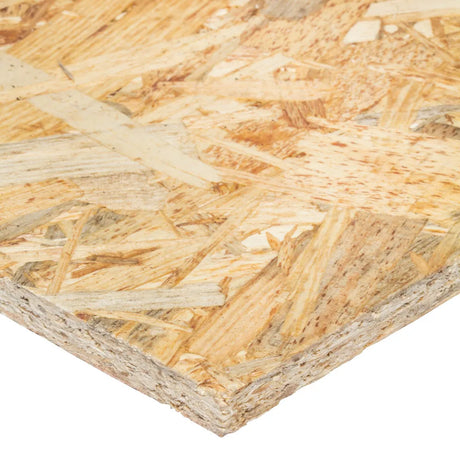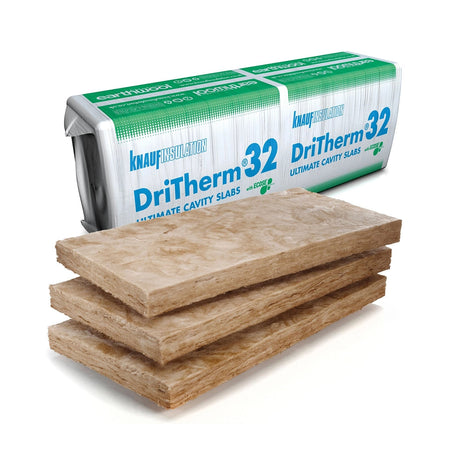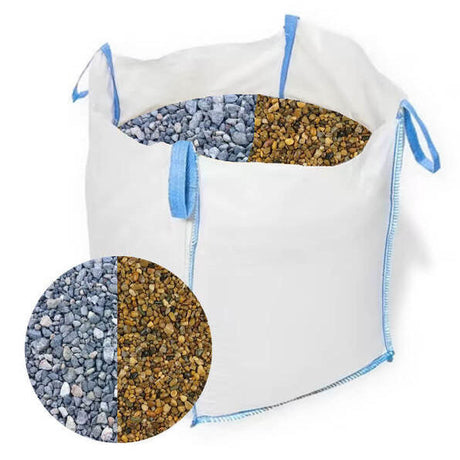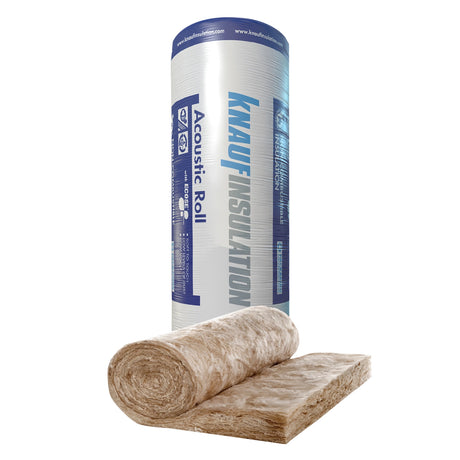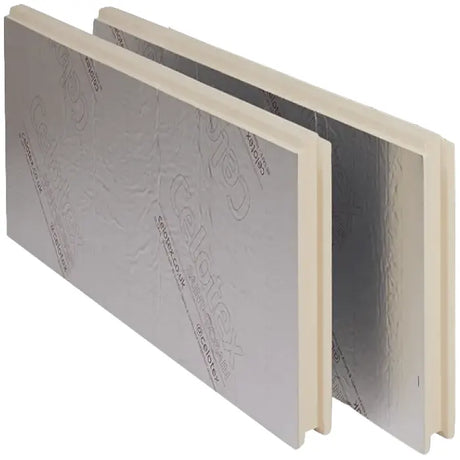Introduction: The Natural Beauty That Demands Proper Care
Timber cladding transforms any structure into a warm, inviting space that seamlessly blends with the natural environment. Whether you're enhancing a garden office, modernising your home's exterior, or adding character to a commercial building, timber cladding delivers unmatched aesthetic appeal whilst increasing property value. The rich textures and organic patterns of natural wood create a visual warmth that synthetic materials simply cannot replicate, making it a favoured choice amongst discerning homeowners and architects across the UK.
However, the very qualities that make timber so appealing—its natural composition and organic nature—also make it vulnerable to the elements. Without proper sealing and maintenance, even the finest timber cladding can deteriorate rapidly, losing both its protective qualities and visual appeal. The UK's challenging climate, characterised by frequent rainfall, temperature fluctuations, and varying humidity levels, places particular demands on external timber surfaces that require proactive management.
This comprehensive guide draws upon decades of experience at DIY Building Supplies, where we've helped thousands of customers protect their timber investments. From understanding the science behind timber protection to mastering practical application techniques, we'll equip you with the knowledge needed to maintain your cladding's performance and beauty for years to come. Whether you're a seasoned tradesperson or an ambitious DIY enthusiast, this guide will help you achieve professional results that stand the test of time.
Why Sealing Timber Cladding Is Absolutely Essential
The British climate presents unique challenges that make timber protection not just beneficial, but absolutely critical for long-term performance. Our maritime environment subjects timber cladding to constant moisture fluctuations, with periods of heavy rainfall followed by dry spells that cause timber to expand and contract repeatedly. Without proper sealing, this cyclical movement creates micro-cracks and gaps that allow moisture to penetrate deep into the wood structure, leading to swelling, warping, and eventual structural failure.
UV radiation poses another significant threat to unprotected timber, particularly during Britain's increasingly intense summer periods. The sun's ultraviolet rays break down lignin—the natural polymer that binds wood fibres together—causing the surface to become grey, weathered, and prone to splitting. This photodegradation not only compromises the timber's structural integrity but also creates an ideal environment for mould, algae, and fungal growth. Once these biological agents establish themselves, they accelerate the deterioration process whilst creating unsightly staining that can be extremely difficult to remove.
Perhaps most critically, unprotected timber becomes vulnerable to wood-boring insects and fungal decay that can compromise the entire cladding system. The combination of moisture and organic material creates perfect conditions for these destructive agents, which can cause irreversible damage before visible signs appear. Professional sealing creates an effective barrier against these threats whilst maintaining the timber's natural beauty. At DIY Building Supplies, we've witnessed firsthand how proper protection can extend timber cladding lifespan from a mere 5-7 years to well over 20 years, making it one of the most cost-effective investments you can make in your property.
Choosing the Right Sealant or Finish: Understanding Your Options
Exterior Wood Stains: Enhancing Natural Beauty Whilst Providing Protection
Exterior wood stains represent the perfect balance between natural aesthetics and practical protection, making them an increasingly popular choice for discerning property owners. These sophisticated formulations penetrate deep into the timber structure, enhancing the natural grain patterns whilst creating an effective barrier against moisture and UV damage. Leading British manufacturers like Ronseal, Cuprinol, and Sadolin have developed advanced stain technologies that allow timber to maintain its natural breathing properties whilst providing comprehensive protection against the elements.
The beauty of quality wood stains lies in their ability to highlight rather than mask the timber's inherent characteristics. Clear stains preserve the wood's natural colour whilst adding depth and richness to the grain, creating a finish that appears almost wet and lustrous. Tinted stains offer subtle colour enhancement that can complement your property's overall design scheme whilst maintaining the organic appearance that makes timber so appealing. These products typically contain UV-absorbing compounds that prevent photodegradation, ensuring your cladding maintains its fresh appearance for years.
Modern penetrating stains offer exceptional durability through their unique formulation chemistry. Unlike surface coatings that can peel or flake, penetrating stains become an integral part of the timber structure, moving naturally with the wood as it expands and contracts. This flexibility prevents the cracking and failure commonly associated with rigid surface finishes, whilst allowing moisture vapour to escape naturally. The result is a finish that ages gracefully, requiring only periodic reapplication to maintain optimal protection and appearance.
Timber Oils: Nourishing Protection for Natural Wood
Timber oils provide deep nourishment that keeps wood healthy and flexible, making them particularly valuable for softwood species commonly used in UK cladding applications. These carefully formulated products penetrate deep into the wood fibres, replacing natural oils that are gradually lost through weathering whilst creating a protective barrier against moisture ingress. Premium oils from manufacturers like Osmo, Fiddes, and Barrettine contain natural waxes and resins that enhance the wood's natural water resistance whilst maintaining its breathable properties.
The application of quality timber oil creates a living finish that works in harmony with the wood's natural characteristics. As the oil penetrates, it stabilises the timber's cellular structure, reducing the tendency to split, crack, or warp under stress. This is particularly important for species like pine, cedar, and larch, which are prone to resin bleeding and dimensional movement. Regular oil treatment maintains the wood's flexibility, allowing it to accommodate thermal expansion without developing the stress fractures that can compromise structural integrity.
One of the key advantages of oil finishes is their ease of maintenance and renovation. Unlike film-forming finishes that require complete removal before reapplication, oils can be refreshed simply by cleaning the surface and applying a new coat. This makes them particularly attractive for busy homeowners who want to maintain their cladding's appearance without extensive preparation work. However, oil finishes typically require more frequent reapplication than other systems, generally every 1-2 years depending on exposure conditions and timber species.
Paints and Opaque Finishes: Maximum Protection with Design Flexibility
Paint systems offer the ultimate in protection and design flexibility, creating a robust barrier that completely shields the timber from environmental damage whilst providing unlimited colour options. Modern acrylic and alkyd paint formulations have evolved significantly from traditional oil-based systems, offering superior durability, colour retention, and application characteristics. Leading brands like Dulux Weathershield, Crown Paints, and Johnstone's have developed specialist exterior timber paints that combine flexibility with exceptional weather resistance.
The protective mechanism of paint systems relies on creating a continuous film that prevents moisture and UV radiation from reaching the timber surface. High-quality exterior paints contain sophisticated additive packages including UV stabilisers, fungicides, and flexible resins that maintain their protective properties even under extreme weather conditions. This comprehensive protection makes paint systems ideal for timber that faces severe exposure or where maximum longevity is essential. The opacity of paint also allows for the use of lower-grade timber, as surface defects and colour variations are completely concealed.
Contemporary paint technology has addressed many of the traditional concerns associated with timber painting, particularly the tendency for rigid films to crack and peel. Modern flexible formulations accommodate the natural movement of timber whilst maintaining their protective seal, whilst microporous technologies allow controlled moisture vapour transmission that prevents trapped moisture problems. The result is a finish that can provide 7-10 years of protection when properly applied and maintained, making it one of the most durable options available for timber cladding.
Preservative Primers: Foundation Protection Against Biological Attack
Preservative primers form the crucial first line of defence against the biological agents that pose the greatest long-term threat to timber cladding systems. These specialist products contain carefully balanced combinations of fungicides and insecticides that prevent wood-boring insects, fungi, and bacteria from establishing themselves in the timber structure. Leading preservative manufacturers like Barrettine, Ronseal, and Cuprinol have developed advanced formulations that provide comprehensive protection whilst remaining safe for domestic use.
The importance of preservative treatment cannot be overstated, particularly for softwood species that are naturally vulnerable to biological attack. Even pressure-treated timber benefits from additional preservative protection, as the treatment process may not achieve complete penetration in all areas, particularly around cut ends and fixing points. Quality preservative primers penetrate deeply into the timber structure, creating a toxic environment for destructive organisms whilst remaining harmless to humans and the environment once cured.
Modern preservative formulations often incorporate multiple active ingredients that target different types of biological threat, ensuring comprehensive protection against the full spectrum of potential problems. These products typically require careful application to achieve optimal penetration, particularly around end grain and joint areas where moisture ingress is most likely. When used as part of a complete finishing system, preservative primers can effectively eliminate the risk of biological degradation, ensuring your timber cladding maintains its structural integrity throughout its service life.
Professional Application Techniques: Achieving Long-Lasting Results
Step 1: Surface Preparation - The Foundation of Success
Proper surface preparation represents the single most critical factor in achieving a durable, professional-quality finish on timber cladding. The temptation to skip or rush through preparation work is understandable, but the long-term performance of any finishing system depends entirely on the quality of the surface to which it's applied. At DIY Building Supplies, we've seen countless examples where inadequate preparation has led to premature finish failure, regardless of the quality of materials used.
Begin by thoroughly inspecting the timber surface for any signs of damage, contamination, or previous finish failure. Remove any loose or flaking material using appropriate scrapers or abrasive tools, paying particular attention to areas around fixings and joints where moisture may have caused localised damage. If the timber has been previously finished, determine whether the existing coating is compatible with your chosen system—some combinations can lead to adhesion problems or chemical incompatibility that compromises the new finish.
The cleaning process requires careful attention to both visible and invisible contaminants that can prevent proper adhesion. Mould, algae, and general dirt accumulation should be removed using a mild fungicidal wash followed by thorough rinsing with clean water. For heavily contaminated surfaces, consider using a specialist timber cleaner from manufacturers like Barrettine or Owatrol, which are specifically formulated to remove organic growth without damaging the wood fibres. Allow the timber to dry completely before proceeding—moisture content should be below 18% for optimal results with most finishing systems.
Step 2: Application Methods - Choosing the Right Technique
The method used to apply your chosen finish significantly impacts both the initial appearance and long-term performance of the coating system. Each application technique offers distinct advantages and limitations that must be considered in relation to your specific project requirements, timber species, and chosen product. Professional results depend on matching the application method to the characteristics of both the substrate and the coating.
Brush application remains the gold standard for most timber finishing applications, offering unparalleled control and the ability to work the coating into the timber surface for optimal penetration and adhesion. High-quality natural bristle brushes work best with oil-based products, whilst synthetic brushes are preferred for water-based systems. The key to successful brush application lies in maintaining a wet edge whilst avoiding over-working the coating, which can lead to brush marks and uneven coverage. Work systematically along the timber grain, using long, smooth strokes that distribute the coating evenly whilst avoiding lap marks.
Roller application can significantly increase productivity on large flat surfaces, but requires careful technique to avoid texture issues and ensure adequate penetration. Use high-quality roller sleeves appropriate to your chosen coating—short nap sleeves for smooth finishes and longer nap for textured surfaces. The rolling technique should combine moderate pressure with overlapping strokes that maintain uniform coverage. For best results, back-brush rolled surfaces whilst the coating is still wet to eliminate texture marks and ensure proper penetration into the timber surface.
Step 3: Multiple Coat Systems - Building Long-Term Protection
The development of a durable, long-lasting finish typically requires multiple coats that work together to provide comprehensive protection. Each coat serves a specific purpose in the overall system, and understanding these roles helps ensure optimal performance from your chosen finishing schedule. Rushing through the multiple coat process or attempting to achieve full protection with a single application invariably leads to disappointing results and premature failure.
The first coat serves primarily as a penetrating sealer that stabilises the timber surface and provides a foundation for subsequent coats. This coat should be applied more thinly than subsequent applications to maximise penetration, particularly around end grain areas where moisture ingress is most likely. Pay particular attention to recoat timing—most products specify minimum and maximum recoat intervals that must be observed to ensure proper intercoat adhesion. Applying subsequent coats too early can lead to solvent entrapment and soft spots, whilst waiting too long may require additional surface preparation.
Intermediate and final coats build the protective barrier whilst developing the desired appearance characteristics. These coats are typically applied at full film thickness according to manufacturer specifications, using consistent application techniques that ensure uniform coverage. Environmental conditions during application significantly impact coating performance—avoid application during periods of high humidity, direct sunlight, or when rain is forecast within the curing period. Temperature should ideally be between 10-25°C with relative humidity below 80% for optimal curing and performance.
Maintenance Strategies That Extend Lifespan Significantly
Annual Inspection and Early Intervention
Developing a systematic approach to timber cladding maintenance begins with regular inspection routines that identify potential problems before they become serious issues. Professional maintenance strategies focus on prevention rather than cure, addressing small problems before they compromise the entire system. At DIY Building Supplies, we recommend implementing a structured inspection programme that covers all critical areas whilst remaining manageable for busy property owners.
Conduct comprehensive inspections at least annually, ideally during late spring when any winter damage becomes apparent but before the most challenging summer weather arrives. Focus particular attention on south and west-facing elevations, which typically experience the most severe weather exposure and consequently show signs of deterioration first. Look for changes in colour, surface texture, or gloss level that may indicate coating degradation, as well as any signs of biological growth, staining, or physical damage that requires immediate attention.
Document your findings with photographs and notes that can be compared year-on-year to track the rate of deterioration and plan maintenance activities. This systematic approach helps identify patterns of wear that may indicate underlying problems such as inadequate ventilation, moisture ingress, or structural movement. Early intervention based on regular inspection findings can often prevent minor issues from developing into major problems requiring extensive remedial work and significant expense.
Cleaning Techniques That Preserve Rather Than Damage
Proper cleaning represents one of the most effective maintenance activities for preserving timber cladding appearance and performance, but inappropriate techniques can cause more harm than good. The key lies in understanding the specific requirements of your finishing system and timber species, then selecting cleaning methods that remove contaminants without damaging the protective coating or underlying timber structure.
For routine maintenance cleaning, begin with the gentlest effective method before progressing to more aggressive techniques only if necessary. A simple solution of warm water and mild detergent, applied with a soft brush or sponge, can remove most general dirt and organic deposits without risking damage to the finish. Work systematically from top to bottom, rinsing thoroughly with clean water to remove all cleaning residues that could interfere with future maintenance activities.
Avoid high-pressure washing, which can drive water deep into timber joints and damage surface finishes through excessive mechanical action. Similarly, harsh chemical cleaners or abrasive materials can permanently damage both the protective coating and underlying timber, creating problems that require extensive remedial work. If biological growth requires more aggressive treatment, use specialist timber cleaners that are specifically formulated to remove organic deposits without damaging wood or finish systems.
Strategic Recoating for Maximum Protection
Developing an effective recoating strategy requires understanding how different coating systems age and degrade under your specific environmental conditions. Rather than waiting for obvious signs of failure, proactive recoating maintains the protective barrier whilst preserving the underlying timber in optimal condition. This approach proves far more cost-effective than reactive maintenance that addresses problems only after damage has occurred.
Monitor coating condition carefully during annual inspections, looking for subtle changes that indicate the beginning of degradation processes. Surface chalking, slight colour changes, or reduced water repellency often precede more obvious signs of failure by 12-18 months, providing an ideal window for recoating activities. Different coating systems exhibit characteristic degradation patterns—penetrating stains may show gradual colour fading, whilst paint systems typically develop localised failures that can spread rapidly if not addressed promptly.
Plan recoating activities to take advantage of optimal weather conditions and your availability, rather than responding to emergency situations during inappropriate seasons. Most coating systems perform best when applied during moderate temperatures with stable humidity levels, making late spring and early autumn ideal for maintenance work. Preparing detailed specifications for recoating work, including surface preparation requirements and application schedules, ensures consistent results and helps maintain warranty compliance for professional-grade products.
Common Mistakes That Compromise Long-Term Performance
Surface Preparation Shortcuts: The Most Expensive Economy
The single most common cause of premature finish failure stems from inadequate surface preparation, yet this remains the area where both DIY enthusiasts and some professionals attempt to save time and effort. The invisible nature of proper preparation work makes it tempting to minimise these activities, but the long-term consequences of shortcuts invariably prove far more expensive than the initial investment in proper preparation techniques.
Attempting to apply new coatings over contaminated or poorly prepared surfaces creates a weak link in the protective system that will fail predictably under stress. Moisture, dirt, and biological contaminants prevent proper adhesion, leading to localised coating failure that spreads rapidly once initiated. Similarly, failing to address underlying timber defects such as resin bleeding, knots, or previous damage creates ongoing problems that compromise the entire finishing system.
The false economy of preparation shortcuts becomes apparent when premature coating failure necessitates complete system removal and reapplication. The cost of this remedial work typically exceeds the original project cost by a factor of three to five, whilst the timber may have suffered irreversible damage during the period of inadequate protection. Professional preparation techniques, whilst requiring more initial investment, consistently deliver superior long-term performance that justifies the additional effort and expense.
Product Selection Errors: Understanding Compatibility and Application
Choosing inappropriate products for specific applications represents another common source of system failure, often resulting from insufficient understanding of product characteristics and environmental requirements. The temptation to use readily available or lower-cost alternatives to specified products frequently leads to compatibility problems, inadequate performance, or premature failure that negates any initial savings.
Interior wood finishes, whilst often appearing similar to exterior products, lack the UV resistance and moisture protection essential for external applications. Using these products externally virtually guarantees rapid failure, often within the first season of exposure. Similarly, attempting to apply water-based coatings over oil-based systems without appropriate preparation can lead to adhesion failures that require complete system removal and replacement.
Product compatibility extends beyond simple coating interactions to include timber species requirements, environmental conditions, and maintenance capabilities. Some coating systems require specific maintenance schedules or environmental conditions that may not be practical for all applications. Understanding these requirements before product selection helps ensure long-term satisfaction and optimal performance from your timber protection investment.
Application Timing and Environmental Considerations
Environmental conditions during application significantly impact coating performance, yet these factors are frequently overlooked or compromised due to project scheduling pressures. Applying coatings during inappropriate weather conditions can permanently compromise their protective properties, regardless of the quality of materials and preparation work involved.
High humidity conditions prevent proper curing of many coating systems, leading to poor adhesion, extended drying times, and increased susceptibility to contamination during the vulnerable curing period. Conversely, high temperatures and direct sunlight can cause rapid solvent evaporation that prevents proper flow and levelling, creating texture problems and reducing the coating's protective effectiveness. Wind during application can cause contamination with airborne particles whilst accelerating solvent loss in localized areas.
Temperature fluctuations during the curing period can cause internal stresses in coating films that lead to premature cracking and failure. Most professional-grade coating systems specify optimal application conditions that should be maintained not only during application but throughout the initial curing period. Planning projects to take advantage of suitable weather windows, rather than forcing application during marginal conditions, consistently delivers superior results that justify the additional scheduling complexity.
Conclusion: Protecting Your Investment Through Professional Care
Properly maintained timber cladding represents one of the most attractive and durable external finishing options available, combining natural beauty with exceptional longevity when appropriate care and attention are provided. The investment in quality materials and professional application techniques pays dividends through decades of reliable performance, enhanced property value, and continued aesthetic appeal that improves with age.
The comprehensive approach outlined in this guide reflects the accumulated wisdom of countless successful projects and the occasional expensive lessons learned from inadequate preparation or inappropriate product selection. Whether you prefer the natural appearance of oil finishes, the subtle enhancement of quality stains, or the bold design possibilities offered by modern paint systems, success depends on understanding the requirements of your chosen system and implementing appropriate maintenance strategies from the outset.
Regular maintenance and proactive care transform timber cladding from a potential liability into a valuable asset that enhances your property whilst providing decades of reliable service. The time and effort invested in proper preparation, application, and ongoing maintenance prove far more cost-effective than reactive approaches that address problems only after damage has occurred. By following professional techniques and using quality materials from trusted suppliers, your timber cladding investment will continue delivering satisfaction and value for many years to come.
Take Action: Protect Your Timber Investment Today
Ready to give your timber cladding the protection it deserves? At DIY Building Supplies, we stock an extensive range of premium timber cladding materials and finishing products from Britain's most trusted manufacturers. From sustainably sourced European timber to advanced coating systems from Ronseal, Cuprinol, and Sadolin, we provide everything needed to achieve professional results that stand the test of time.
Our expert team combines decades of practical experience with comprehensive technical knowledge to help you select the perfect materials for your specific requirements. Whether you're planning a new installation or maintaining existing cladding, we provide detailed technical support that ensures optimal results from your investment.
Visit DIYBuildingSupplies.co.uk today to explore our complete range of timber cladding solutions, or contact our technical specialists for personalised advice on your specific project requirements. Your timber deserves the best protection available—let us help you achieve it.
Professional results, competitive prices, and expert support—that's the DIY Building Supplies difference.



